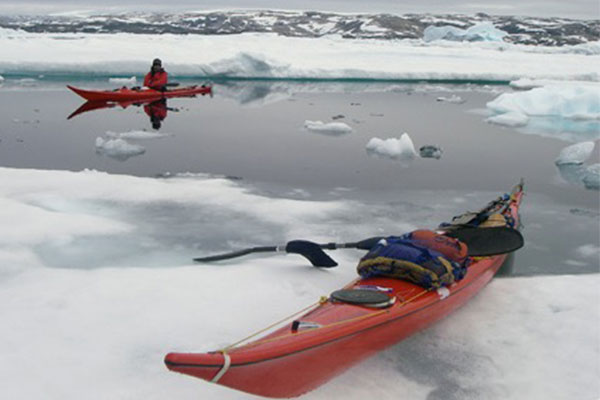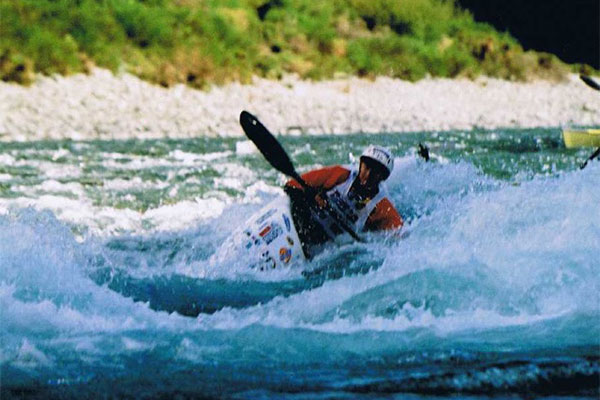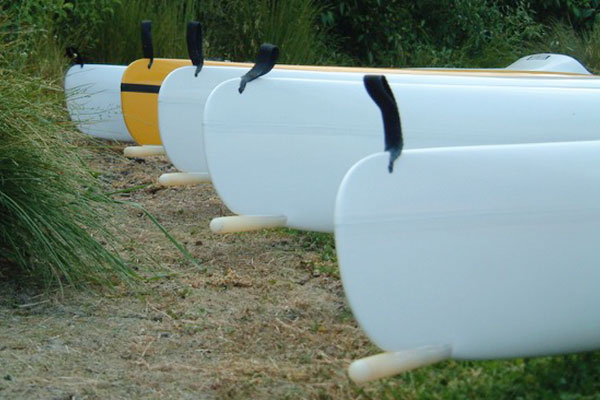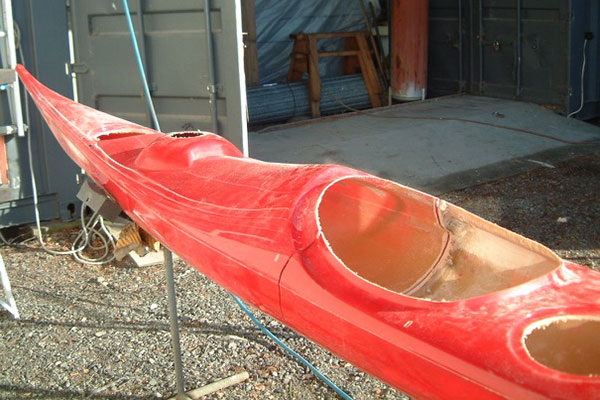Kayak Design and Construction
“I do not think that the evo’s will ever be beaten in design and performance. They were so far ahead of their time it wasn’t funny and still nothing tops them.
Also the build layup that you use is the best and I certainly hope the new manufacturers don’t change that in ant way at all.
I wanted to get one over here but the last time I inquired to get one shipped over I was quoted in excess of $1000 !!!
I have received an email from Rikki which was great thanks and would love to help them getting some multi sport boats into Aussy. they certainly don’t know how to build let alone design descent boats over here.
What are your thoughts regarding the speed of the edge vs omega on a braided river like Waimak ??? would be keen to know.
You are a very clever and creative man Grahame, I am in ore of the things that you have designed and made in your time. I hope that you continue to potter with your wonderful skills.” – Unsolicited email from multiple Sisson Kayaks customer since 1987.
Kayak Design
The answer is pure PHYSICS.
DESIGN PHYSICS as well as CONSTRUCTION PHYSICS
The FIRST PRINCIPLES of design, construction and layup physics can be learned from Machinery’s Handbook. See below.

A kayak has a ‘motor’ output measured in Watts. Small output. A kayak has air drag, water friction drag and wave-making drag.
Water friction drag is in DIRECT PROPORTION to the wetted area of the hull. Low Wattage (beginner) paddlers seldom overcome this drag. It is all explained in detail in the above book.
Wave making drag is in DIRECT PROPORTION to the ability of the ‘motor’ to operate at a higher Wattage. Trained athletes can overcome the water friction drag – only to then hit-the-barrier of the wave-making drag. It is all explained in detail by Naval Architects.
Despite the antics and snake-oil-salesman promises (“The Advantage is 10% faster than the Evolution”***) of too many manufacturers and retailers – the above physics laws remain absolutely unchanged. (***Factually true – provided the Advantage was paddled by Andrew and the Evolution was paddled by me!)
Recently I was invited to view a ‘new’ top-model kayak aimed at entry level / mid-range paddlers. The hull design had huge wetted area (high drag). The rudder lines leaked (more drag). The ‘Hi-Tech’ layup had failed due to compressive loading. Ahhhh?????? Maybe resin undercure? Landfill. Extreme case of the Dunning Kruger Effect.
Kayak Construction
Layup

Unidirectional glass fibres form the ‘keel’ of every Sisson Kayak since about 1983. There are 23,000 fibres down the keel-line with 46,000 fibres at the high impact ends. The kayak above was constructed to withstand ice contact of the above form. These Nordkapps have 46,000 fibres down the keel line and 92,000 fibres at the hull ends.

When the 1990 Xerox Challenge (length of NZ multisport race) arrived in Picton I set up a small workshop to maintain my customers kayaks. Not much work required. A non-customer arrived with a vee hulled surf ski, the layup of which had been specified by an intellectual midget.

Thin and light Kevlar of uniform thickness. Kevlar – being extremely weak in compressive loads – had folded along the keel like a toy paper tube. I did my best to effect a repair – but really – by the time the Xerox Challenge reached Bluff – this ski was land-fill. Extreme case of the Dunning Kruger Effect.
The exotic reinforcements such as Kevlar and carbon fibre are assumed – by too many – to make “Stronger kayaks”. The exotics have higher tensile strength. However kayak impacts and loadings also demand high compressive strength. Certain types of “Old fashioned” fibreglass – if properly applied – have huge compressive strength. Sisson Kayaks used a carefully chosen mix of old and new reinforcements – resulting in tough kayaks that have for so many years performed and endured.
Certainly carbon and Kevlar can exhibit huge compressive strength. But only when used with extremely high grade epoxy resin – within an autoclave. Anyone for a $50,000 kayak? Do you recall the spectacular 1980’s carbon fibre yacht mast failures? It took many years to develop the correct resins and construct the specialised autoclaves.
Resin choices
Apart from one Vinyl ester kayak (which made me ill) – every Sisson Kayak has been made of high grade polyester resin. Polyester resin smells but the workers live to old age. The same cannot be said for epoxy resins. I have constructed carbon fibre bike frames using a very specialised epoxy. I had perfect working conditions to separate my body away from the resin. Such safety is not possible making kayaks – where the join is made – with the head inside the kayak. More extreme (but sad) Dunning Kruger Effect.
Tradesman Techniques
Fully listed in my next post – readable only to those who have the password. Such as the owners of Nautique Kayaks! To enjoy the benefits of kayaks that perform and endure – built by tradesmen – place you name on the Nautique Kayaks pre-order list – Email Rikki ([email protected]) NOW
work in progress
Posted in: News, Uncategorized



